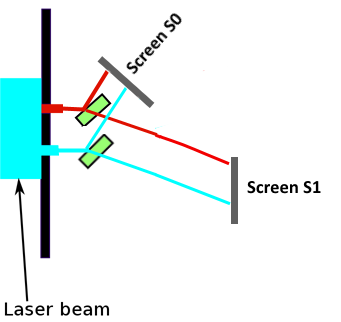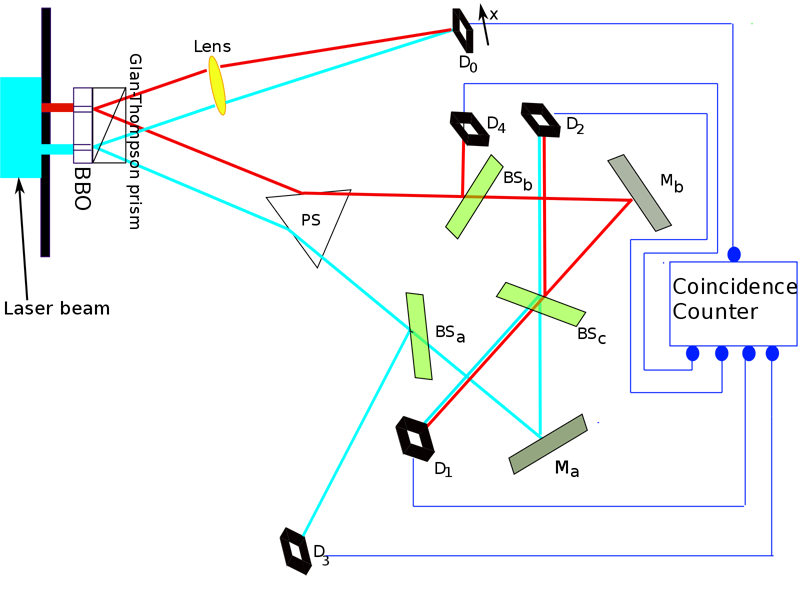I have a follow-up question to Interference pattern in delayed choice quantum eraser and Does simply putting a photon-splitting crystal after a double slit break the interference pattern?
(Wikipedia: https://en.wikipedia.org/wiki/Delayed-choice_quantum_eraser)
If we were to create a much simpler experiment by replacing all detectors and equipment by two screens S0 and S2, would it be possible to visually see an interference pattern if we tried (pick a suitable distance and angle for the screens S0 and S1, make sure we pick the right beams coming off the SPDC)?
I know that SPDC are rare events, so most photons would be noise on the screen. Let's assume for a moment that we had a more efficient SPDC.
If the answer is no: why not? (Assuming noise is not the issue). Do we need any additional equipment (which kind)? I understand that the photons that come off the SPDC are not the same as the original photons produced by the laser. So if no interference pattern is possible because of the SPDC, then I don't understand why we would be able to get an interference pattern then in the full experiment as described on the Wikipedia page when adding BSc, D1 and D2?
In case the SPDC is the issue, then how about replacing it with beam splitters? Would we see an interference pattern in that case?



